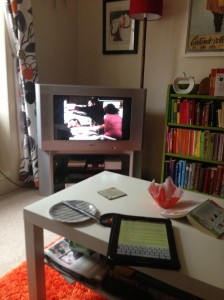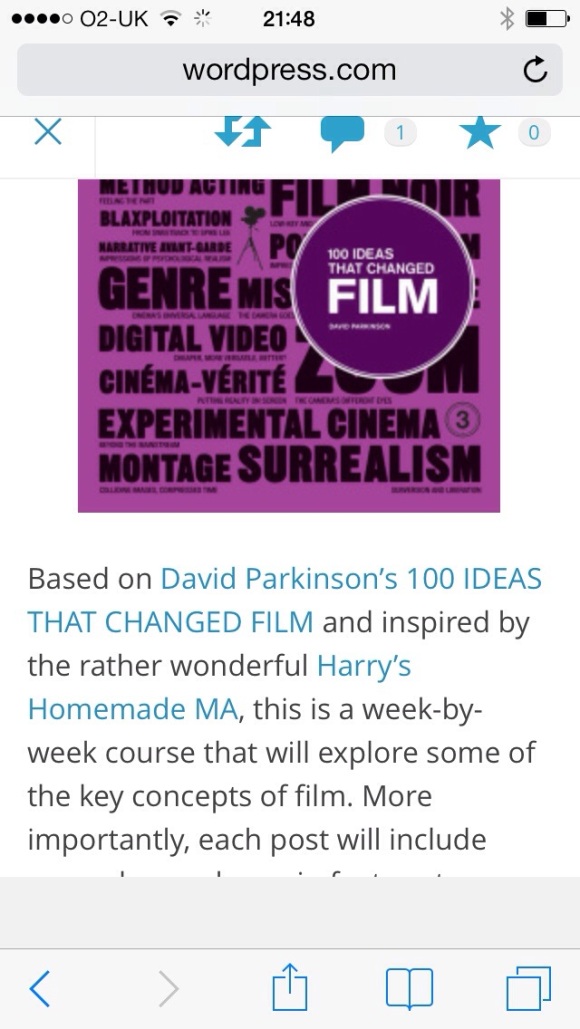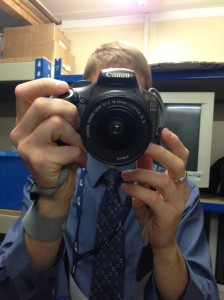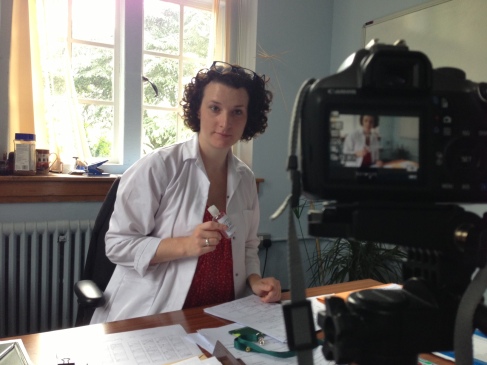I have been really looking forward to re-watching this film and what a lovely Sunday afternoon matinee it is. A Matter of Life and Death is a romantic fantasy film created by the British writing-directing-producing team of Michael Powell and Emeric Pressburger, and set in England during the Second World War. It stars David Niven, Roger Livesey and Kim Hunter. It is the second Powell and Pressburger film on the list already, which is great. It seems slightly odd that these beautifully made, but rather eccentrically British films are so appreciated. I have heard that Martin Scorsese is a particular fan.

A lovely, comfy Sunday afternoon
I have seen it before, when my lovely friend Nat bought me a Powell and Pressburger box set a few years ago, but I was interested to see it again after reading Jack Cardiff’s autobiography and looking with a new eye at all his inventiveness with technicolor. There was a great DVD extra on the disc about him too, which was very interesting. A Matter of Life and Death has always been my favourite Powell and Pressburger film, it has such a great concept and is envisioned perfectly. I always like a movie with a court scene, especially Mr Smith Goes to Washingon and An Anatomy of a Murder.
Like The Ladykillers, I always forget that it’s going to be in colour, but the technicolor black and white of ‘the other world’ gives it a strange, pearly quality that is perfect for a heaven type place. It seems so contrary to make ‘the other world’ black and white and earth colour, but it makes a strange sense, especially as the colour of earth is amazing, particularly the early sequences of Kim Hunter on the phone and Niven on the beach. It’s crazy how much make-up they all have to wear to compensate. I love the meta qualities of the film, such as when the incompetent Conductor 71 comes down to earth and watches his lapel flower turn to colour (in a beautiful graphic match) and says ‘we are straved of Technicolor up there.’ The Technicolor cinematography is lovely, Jack Cardiff is suitably revered, but it is generally so crammed full of visual and technical details – the camera obscura, the graphic matches, the cross dissolves, filters and framing, the eyelid closing. Wonderful.
I really like the Communist aspect of ‘the other world’, the American captain has issues after clearly managing to get to the top, but it’s lovely that everyone has a report and all are treated equally. This must have been fairly political then. I also love the look of ‘the other world’, all the Art Deco features and the fact that it seems to be run by beautiful women. It looks like a beautiful, shiny Fred and Ginger musical set. The escalator is brilliant and was constructed to actually work – an impressive engineering feat.
David Niven has always been a favourite, ever since reading his autobiographies as a teenager and Roger Livesey is great and I loved him as Colonel Blimp. His voice is very comforting and warm, like a hot chocolate on the sofa. Pretty much a symbol for this whole film.
I also love luxuriating in such an amazing view of Britain. I know it’s romanticised, but I love the thought of them learning a Shakespeare play or the view of the village and the country house. People cycling around, playing chess and being so polite to each other. And the focus on a British voice and poetry. The attacks on British history in the court room scene are also interesting, its criticism and its support by Livesey. The French man is also an amazing stereotype – very funny, although I imagine a French viewer wouldn’t see it like that!
Creative:
Something technically interesting
Maybe the same thing in colour and black and white or turning from one to the other in the same shot like the change from the operation to heaven.
Focus on light
Montage of different features














